Last Chance to Catch NYC's Holiday Notalgia Train
We met the voices of the NYC subway on our nostalgia ride this weekend!


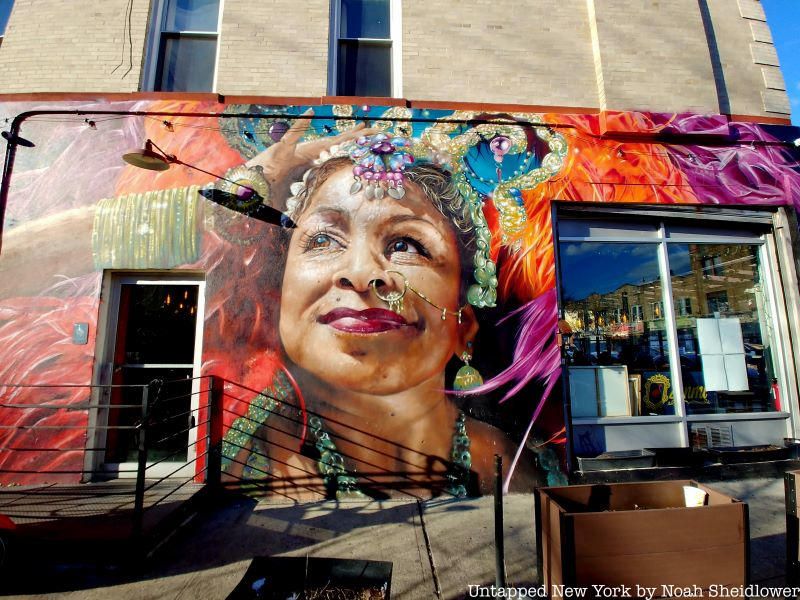
Little Caribbean is home to one of the largest and most diverse Caribbean communities outside of the West Indies. Located on the corridors of Flatbush, Church, Nostrand, and Utica Avenues, Little Caribbean contains dozens of restaurants, stores, cultural centers, and religious institutions, from Trinidadian bake shops to Jamaican churches. Since the late 1800s, Caribbean immigration has been prevalent throughout the five boroughs, with significant immigration from countries like Haiti, the Dominican Republic, Antigua, and Guyana escalating in the mid-to late-1900s. Shelley Worrell, the founder of caribBEING, led the initiative to designate the Little Caribbean neighborhood, helping compile and promote a list of Caribbean-owned businesses. Worrell, alongside program manager Kenya Cummings, collaborated with Untapped New York to curate this list of top spots throughout Little Caribbean for New Yorkers to explore!
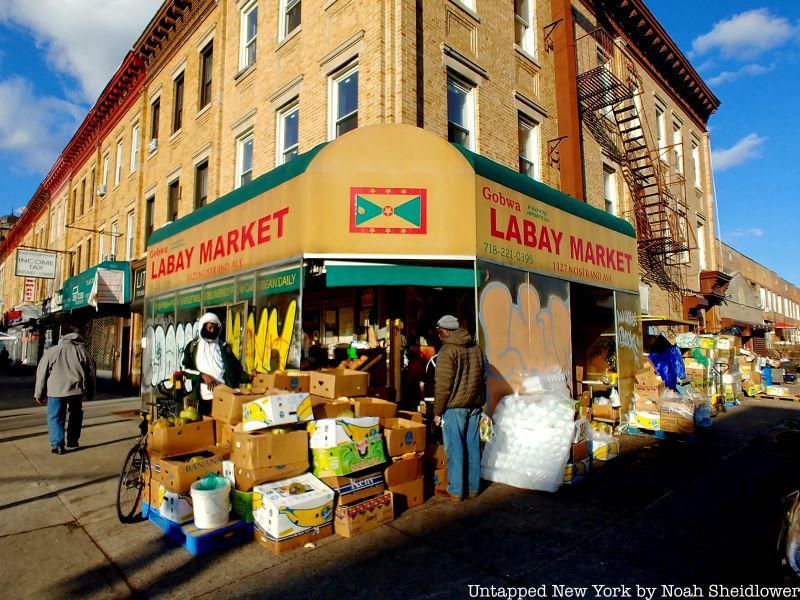
Labay Market, boasting a large Grenadan flag on its awning, has been a staple in the community for well over a decade. Located at 1127 Nostrand Avenue, the market is owned by a man known to many as “Big Mac,” who imports many of his ingredients from a 60-acre farm he owns in Grenada. These include breadfruit, jackfruit, callaloo, and ground provisions including cassava and green bananas. Hard-to-find produce such as dasheen bush (taro leaves) and eddo root are also sold.
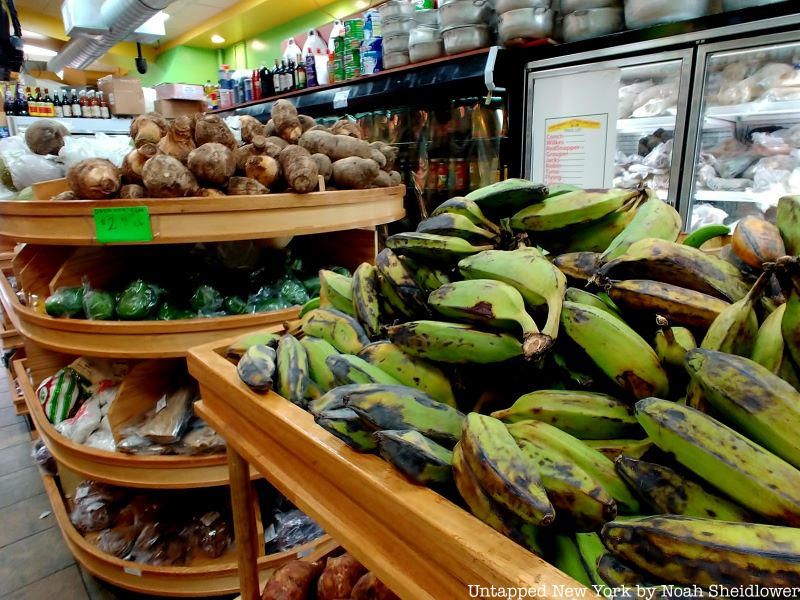
Spices from Grenada and nearby islands include nutmeg, cinnamon, and chadon beni (also known as culantro, which has a similar aroma and flavor as cilantro). The market also sells traditional utensils such as dutch pots and lélé sticks. On weekends, Big Mac’s sister Margaret often cooks up dishes featuring ingredients like breadfruit and various types of fish.
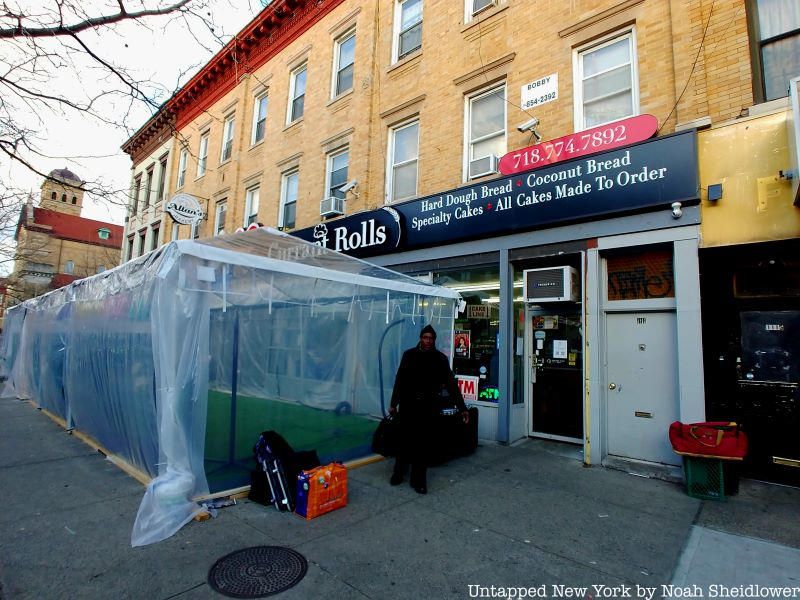
Allan’s Bakery is one of the longest-standing Caribbean businesses in Little Caribbean, serving Caribbean and West Indian products since 1961. The bakery’s namesake opened the business with his wife Gloria Smith over six decades ago, starting with a small oven and selling baked goods out of his vehicle in 1958. Allan was a native of St. Vincent and began working at hospitals after moving to the U.S., while Gloria grew up in Panama and started out at a typewriter company. The bakery’s first storefront was at 425 Saratoga Avenue, though it later moved to 1109 Nostrand Avenue in Prospect Lefferts Gardens after its explosion in popularity.
The bakery is known for its breads, including coconut bakes, pan bread, tennis rolls, and butter flaps. Popular pastries include currant rolls, guava and passionfruit turnovers, cassava pone, and tamarind balls. Cakes range from fruit/blake cake to nearly a dozen sponge cakes to carrot cakes. On the more savory side, the bakery sells bake and codfish, Trinidadian doubles, pholourie (fried split pea and flour dough balls), and buss-up shot (a buttery flatbread).
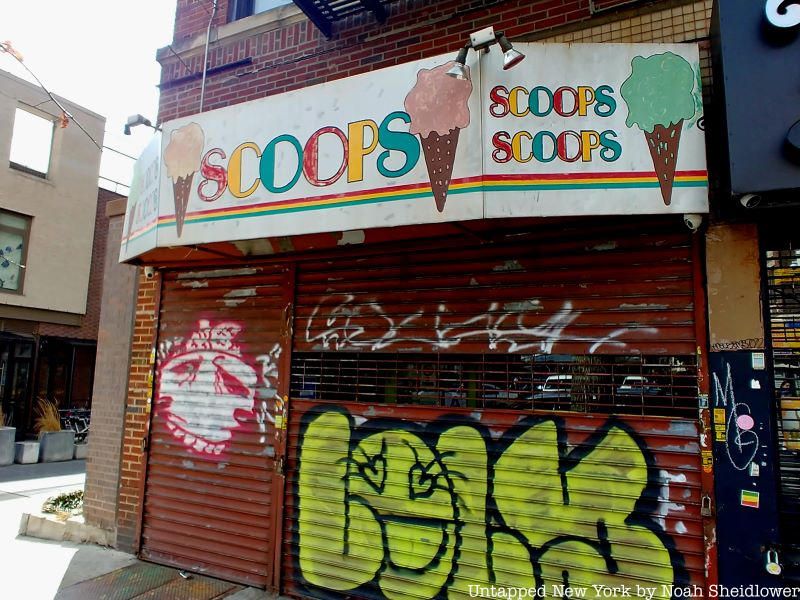
Scoops in Prospect Lefferts Gardens is a Caribbean-owned ice cream parlor and vegetarian store that has long been recognized as one of the neighborhood’s important cultural centers. The shop’s owner, Tony Fongyit, has run the shop for nearly four decades on Flatbush Avenue. A native of Trinidad, Fongyin started out with 24 flavors inspired by his adherence to Rastafarianism, which advocates a diet called ital that avoids meat and dairy. Scoops survived a contentious eviction attempt in 2019 after his rental agreement changed from a yearslong lease to month-to-month.
Entrees include rice and pigeon peas, tofu with a pumpkin or cashew sauce, curry potato with roti, and coo-coo cornmeal with okra polenta. The shop also offers a veggie burger and a “sunshine burger” made with sunflower seeds, brown rice, and vegetables. Flavors have included grape nut, soursop, and butter pecan, and the spot also serves wheatgrass juice.
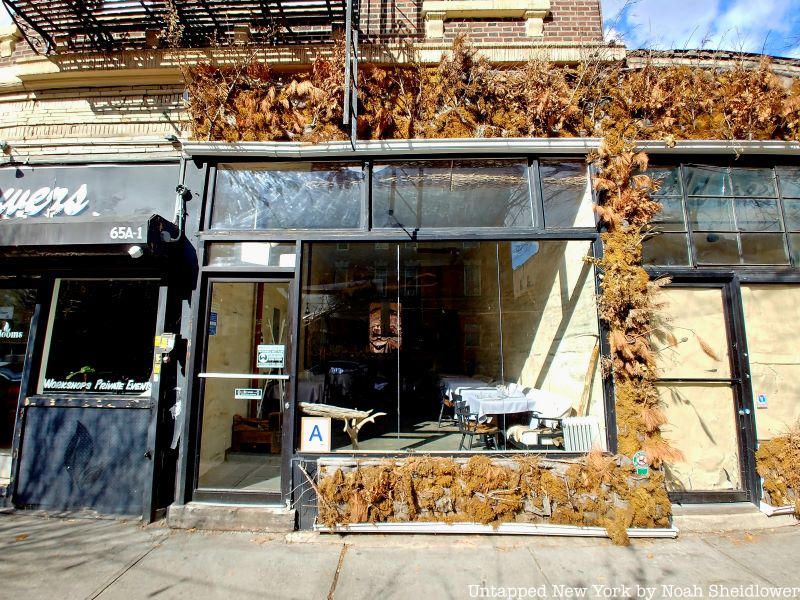
Honey Badger, an experimental restaurant in Little Caribbean, is the brainchild of co-owners Fjölla Sheholli and Junayd Juman, the latter of whom hails from Trinidad. According to an article from OpenTable, however, the owners don’t even consider it a restaurant. The restaurant offers a 10 to 14-course tasting menu of “wild to table” dishes using many foraged ingredients, from wild fish to local honey. Juman considers these ingredients as “ugly produce,” meaning they are often neglected for blemishes or other inconsistencies.
The menu at Honey Badger changes daily, given that each day is essentially its own season. Past menus have included dishes such as peas and carrots with wild dulce seaweed, pickled herring with a blue algae aioli, crab tartine with a micro-green pesto, and grass-fed ribeye with hickory and burdock. Ingredients like monkfish liver, ostrich, and wild nettles (made into ravioli) have also made their way onto menus.
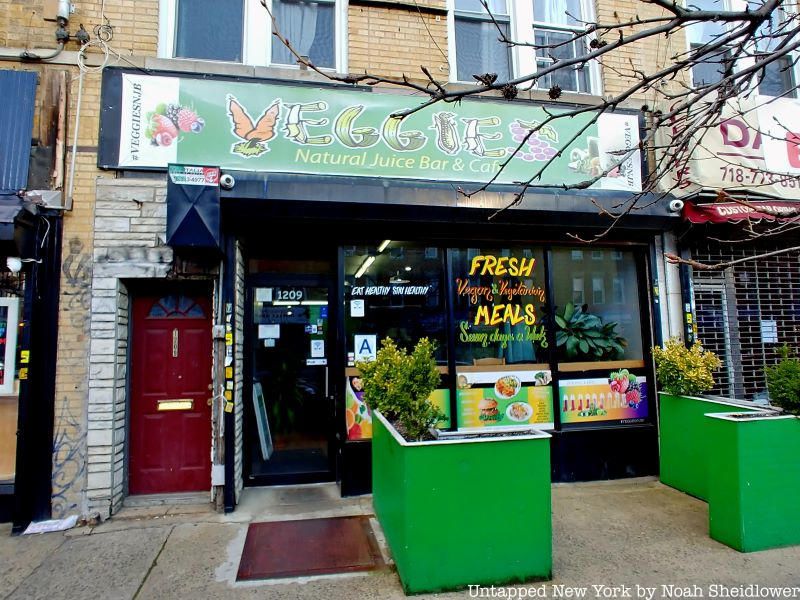
With locations on Nostrand Avenue and Franklin Avenue, Veggies Natural Juice Bar is a popular spot for healthy Caribbean-inspired eats in the neighborhood. The eatery offers a selection of salads including quinoa salad with organic mixed greens, pineapple, avocado, and cranberries. Its grilled jerk salmon is served with tropical salsa and spinach rice, while vegan options include ginger chik’n or pepper steak with coconut cream and spices.
The restaurant offers a handful of smoothies featuring a selection of fruits and vegetables, such as the Tropical Blend with mango, papaya, pineapple, banana, and strawberry. Also on the menu is a selection of juices, from their Island Breeze to their Weight Loss.
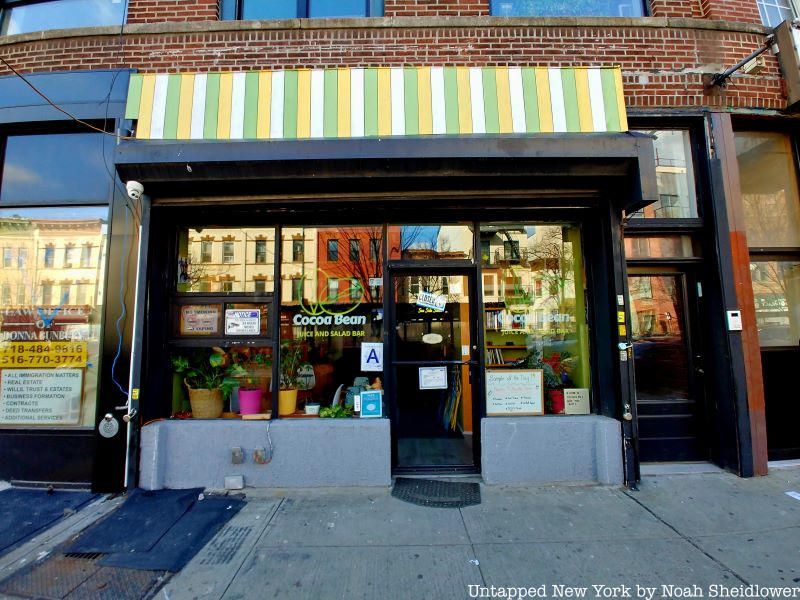
Open since June 2021, Cocoa Bean Juice and Salad Bar is the creation of Francesca Cassandra Denis. The name refers to what Denis’ mother would call her soon-to-be child. Denis, who is of Haitian descent, opened Cocoa Bean with health and wellness values in mind, using fresh produce to stay true to Caribbean flavors and cultures. Many food and beverage options are inspired by locations within various Caribbean islands.
On the food side of the menu are salads ranging from Tropi-kale Caesar to N’ap Boule noodles with Haitian pikliz (or pickled cabbage and carrots). Wraps are filled with garlic, spinach, black beans, and red bell peppers, alongside homemade hummus. The restaurant also serves patties made with codfish, wild salmon, pumpkin, and callaloo, as well as various fruit bowls with honey. Drinks pull from the flavors of the ABC Islands, St. Martin, Barbados, and Grenada, incorporating ingredients like cayenne and ginger to add more punch. There are over a dozen smoothies made with superfoods such as chia seeds, bee pollen, goji berries, turmeric, and raw cocoa, with bases ranging from coconut water to tamarind juice.
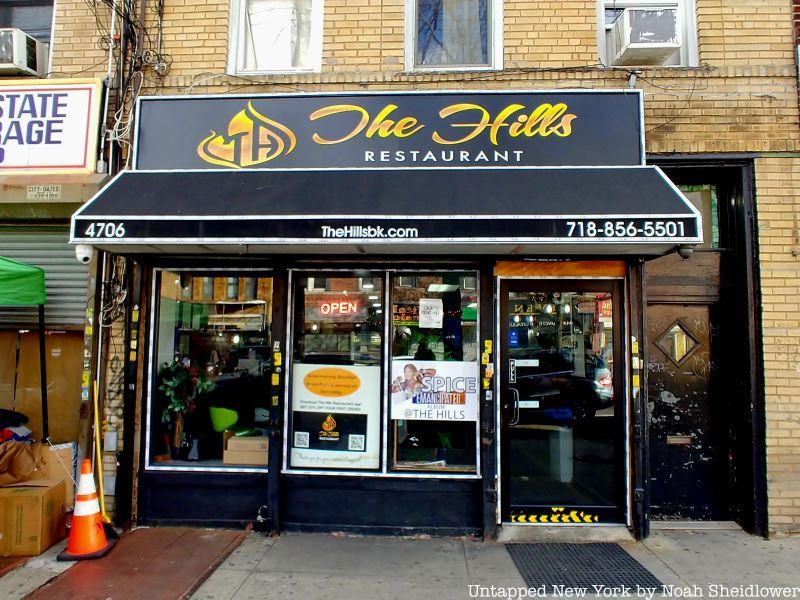
The Hills, on the outskirts of Little Caribbean on Church Avenue near Pam’s Bakery, is a Guyanese restaurant open since 2010. The Hills is owned by Doris Rodney, a Georgetown, Guyana native who opened the restaurant after nearly two decades of cooking on weekends and special events. Rodney has contributed more than just high-quality Caribbean food to the community; she has hosted Christmas parties to distribute toys to children, as well as Father’s Day events.
The menu includes Guyanese and Trinidadian favorites including bake and saltfish, a fried bread stuffed with saltfish, scotch bonnet, onions, and tomato. Pepperpot, the national dish of Guyana, is a meat-based stew prepared with cinnamon, clove, hot peppers, and cassareep, a thick black liquid made from cassava root. Other popular items include souse, a cold dish of pickled pig meat, pholourie, dhal puri, and Indo-Chinese dishes like chow mein.
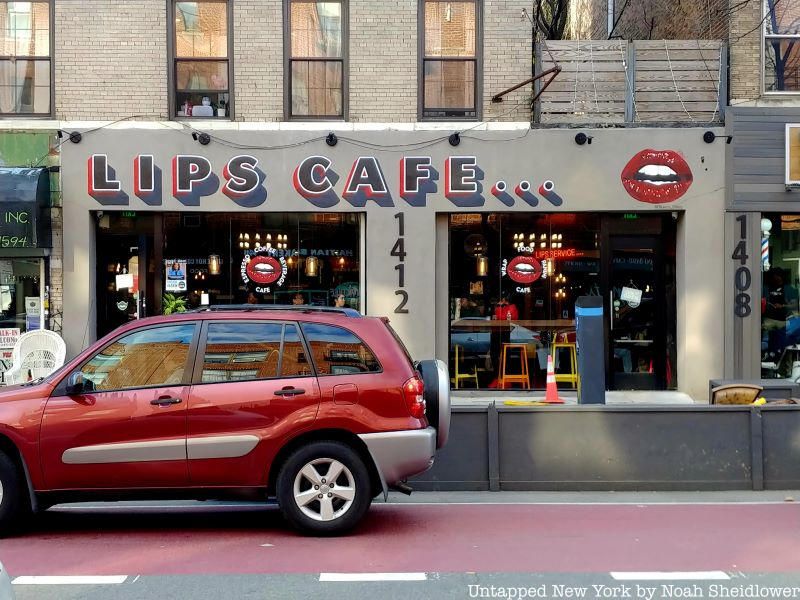
Located in the heart of Little Caribbean, Lips Cafe is a casual coffee shop, Caribbean restaurant, and cocktail bar; some consider it an art museum as well. Mother and son pair Donna and Jamane Weekes opened Lips Cafe in August 2019 on Nostrand Avenue between Martense Street and Linden Boulevard, just around the corner from where Jamane grew up. Jamane previously worked as a real estate market analyst before switching gears, while Donna works in fashion. She launched a clothing line called Ethel Fashion. The Weekes wanted to share their St. Vincent’s and Caribbean culture in a creative atmosphere that pulls together elements of a more traditional coffee shop and bar.
Lips Cafe offers over a dozen varieties of coffee, including a latte, red eye, americano, and dirty chai. In addition to green and blue matcha, there is a selection of Ethel juices including ginger or mango lemonade. Bake and saltfish is a popular breakfast item, while lunch options include a selection of salads with salmon or shrimp. Nine wraps are listed on the menu, such as jerk chicken, ham, and turkey. Dinner meals include a variety of rice bowls with plantain, steamed cabbage, and creamy spinach. There are five types of rasta pasta, prepared with a selection of cheeses, spices, and sweet peppers. Lips cocktails come in every color of the rainbow, including the Purple Lip with lavender and butterfly pea flower, and the Orange Lip with tequila, rum, and mango.
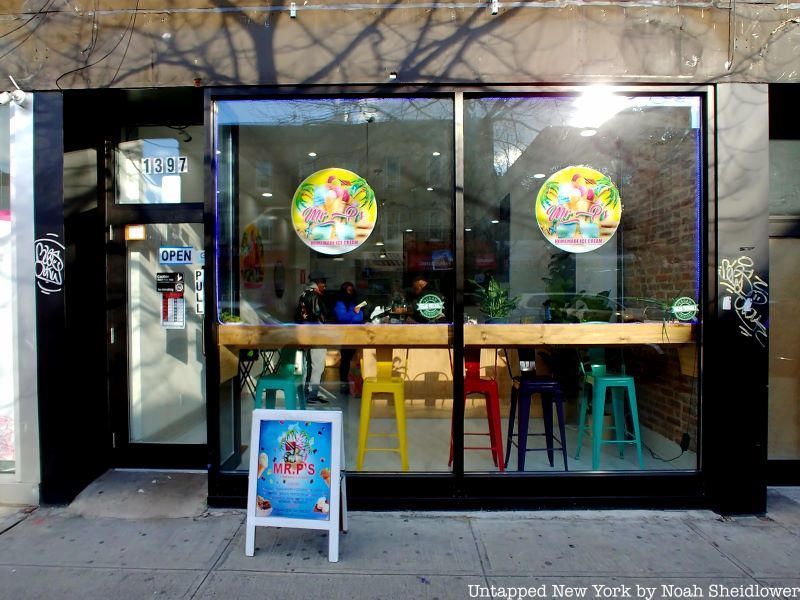
Starting out as an ice cream cart, Mr. P’s Ice Cream Shop offers a selection of homemade tropical ice cream flavors. The shop had its soft opening 11 weeks ago, though Mr. P has been selling for years. The ice cream shop incorporates elements of the owner’s Trinidadian heritage, leading to flavors including coconut, soursop, and sorrel.
Some alcohol-inspired flavors include Guinness, pina colada, and rum and raisin, while other popular flavors include Mauby (a tree bark-based beverage), beet ginger, and grape nut. The ice cream spot has also begun selling vegan ice cream flavors, as well as a selection of baked goods like lemon cake with ginger cookie crumble.
Ariapita is a Tribagonian restaurant along Flatbush Avenue near Little Haiti to the south of Little Caribbean’s center. Ariapita is the creation of Trinidadian chef Osei Blackett, better known as “Chef Picky,” who moved to the U.S. at 20 to pursue his passion for cooking. Chef Picky owns Picky Eaters, a quick-serve Trinidadian restaurant further south on Flatbush Avenue, and he runs pop-ups and food experience events he calls “The Picky Experience.” He has planned menus for The James Beard House, Gracie Mansion, and the United Nations Offices.
The menu at Ariapita is small but diverse, with a selection of entrees ranging from curry-dusted shrimp to curried crab dumplings to stewed fish. These entrees can be accompanied by sides including bhagi (a spinach rice dish sometimes using other leafy vegetables), buss up shut (paratha bread), and cassava oil down (using coconut milk and hot pepper). Other sides include oxtail pelau, Ital curry, and potato pie. The restaurant also offers six cocktails, such as their Mauby Sour with dark rum or Forres Park with white rum, sorrel syrup, and grapefruit soda.

Right in the heart of Little Caribbean on Nostrand Avenue, Aunts et Uncles is a popular plant-based eatery with a casual and hip vibe. The cafe was opened by Nicole and Michael Nicholas in October 2020, gaining the attention of New York Times reviewer Pete Wells, who praised some of the dishes and said the restaurant’s name “suggests a caretaking angle to the hospitality and the cooking.” Michael Nicholas, whose parents have roots in St. Lucia, collaborated with his wife Nicole, whose family is from St. Vincent and Trinidad, on the plant-based concept, selling books and clothes (including their “Old Earth” collection) in addition to top-notch food. The interior is filled with plants and sunlight, in addition to a pink couch and sea-green chairs.
The eatery is known for dishes including bake and saltfish, which substitutes the fish for hearts of palm, stuffed inside a bake with tomato and peppers. Hearts of palm also feature in its lobster roll, prepared using a pretzel bun with vegan mayo and fresh dill. Mac and cheese is another popular dish, prepared with almond and coconut milk, cauliflower, and white truffle oil. Their Tivoli tacos are made with Beyond Meat, accompanied by pico de gallo, arugula, cilantro, and spicy mayo. The cafe’s logo also features on a selection of clothing sold inside.
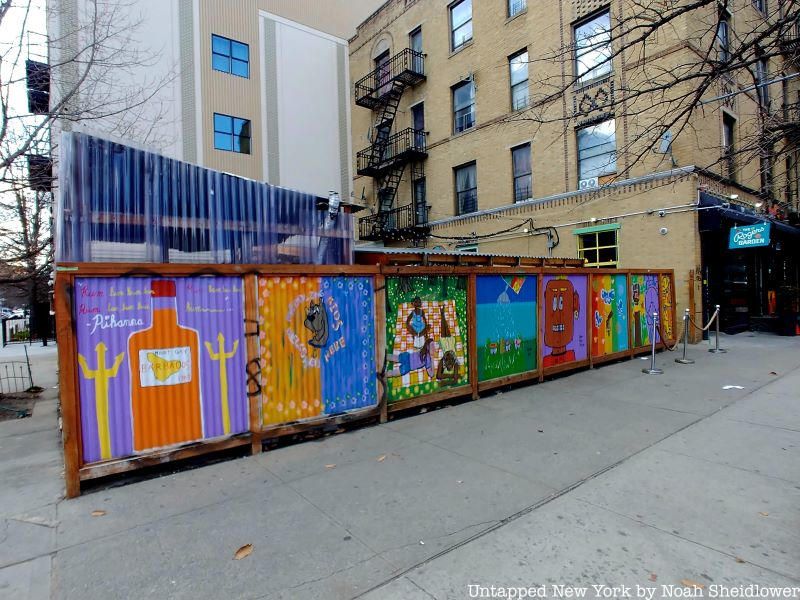
A newer addition to Little Caribbean, The Rogers Garden is a courtyard cocktail garden with a Caribbean-inspired food and beverage menu. The bar has hosted weekly culinary pop-ups, including island bowls and BBQ events. The Rogers Garden is owned by Garnett Phillip, a Brooklyn native of Ethiopian and Trinidadian descent who designed the space to mimic her childhood trips to Trinidad. Garnett previously owned ice cream parlor Candy Rush and sandwich shop Taste Buds. The island-inspired space features bright colors, raw wood, and corrugated metal, and the garden bar is lined with murals.
Cocktails include the Hellshire Painkiller, named after Hillshire Beach in Jamaica and featuring bounty rum, Hamilton pimento, and pineapple juice; the Rodney Bay Rum Punch inspired by St. Lucia; Dark ‘n’ Stormy, taking its name from Bermuda; and Brazil’s famed drink the caipirinha. The spot offers about 130 types of rum, from Guyanese El Dorado to Haitian Barbancourt to Martinican rhum. Food options include a jerk chicken panini, curry chicken quesadillas, and beef lentil soup.
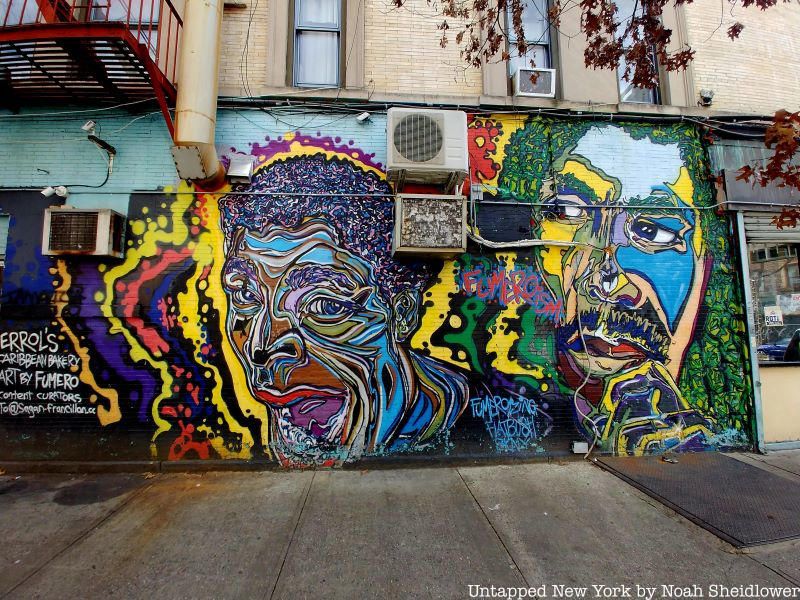
Throughout Little Caribbean, murals line the walls of buildings and subway platforms, showcasing the artistry and culture of the neighborhood. At the Church Avenue station that services the 2 and 5 subway, artist Louis Delsarte installed his Transitions in 2001. The stained glass and glass mosaic murals depict cultural scenes from the neighborhood, such as women celebrating the West Indian American Day Parade. In one scene, a young girl picks oranges from a fruit stand with her mother, while in another, churchgoers walk alongside costumed men. Delsarte was born and raised in Brooklyn and also created a mural called The Spirit of Harlem depicting figures from the Harlem Renaissance.
By Errol’s Caribbean Bakery on Hawthorne Street and Flatbush Avenue is a mural by Fumero depicting Bob Marley and James Baldwin with vivid blues. Errol’s is known for its beef patties, chicken soup, oxtail, and currant rolls. Artist Damien Mitchell depicted a woman wearing a jeweled headpiece, with feathers and gold bangles in his mural outside Zanmi. The mural takes inspiration from Crown Heights’ West Indian Day Parade, fittingly displayed outside the Haitian restaurant known for dishes like balsamic Kreyol scallops, Pâté Kode, and their plantain submarine.
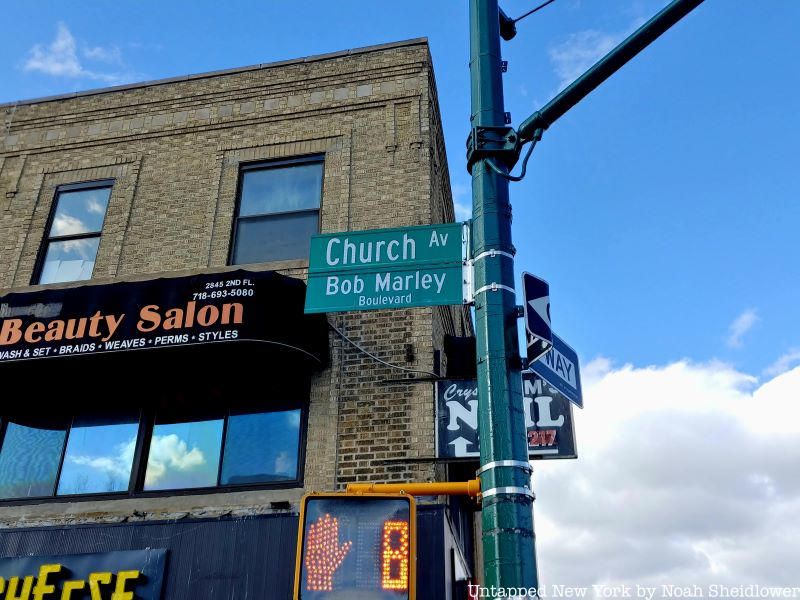
Since 2006, a stretch of Church Avenue in East Flatbush was given the name Bob Marley Boulevard. Honoring the legendary reggae artist, Bob Marley Boulevard passes through the center of Little Caribbean on Nostrand Avenue before extending east. At its intersection with Nostrand Avenue is a popular Jamaican spot called Exquisite Express, a few doors down from another food spot called Caribbean Vibes. To the east of the Church Avenue station are a handful of eateries including Little Haiti, Tastee Pattee, and Trini Breakfast Shed.
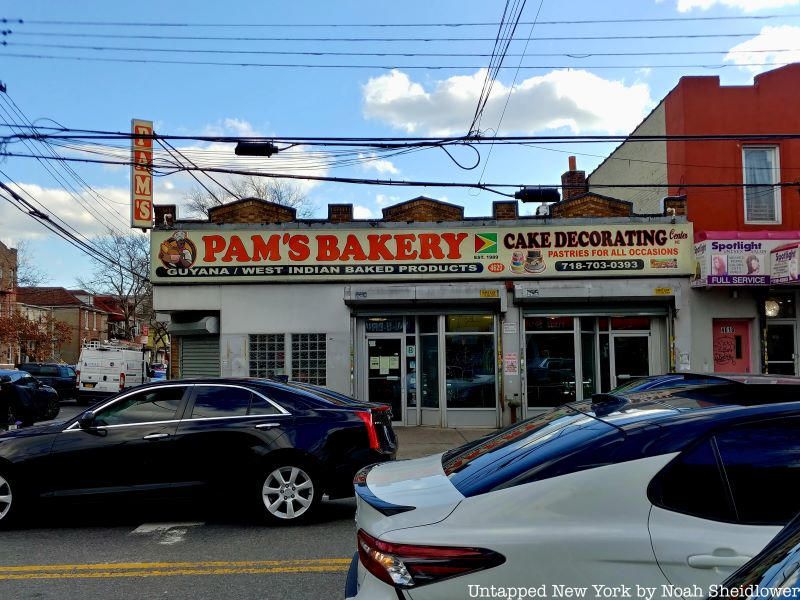
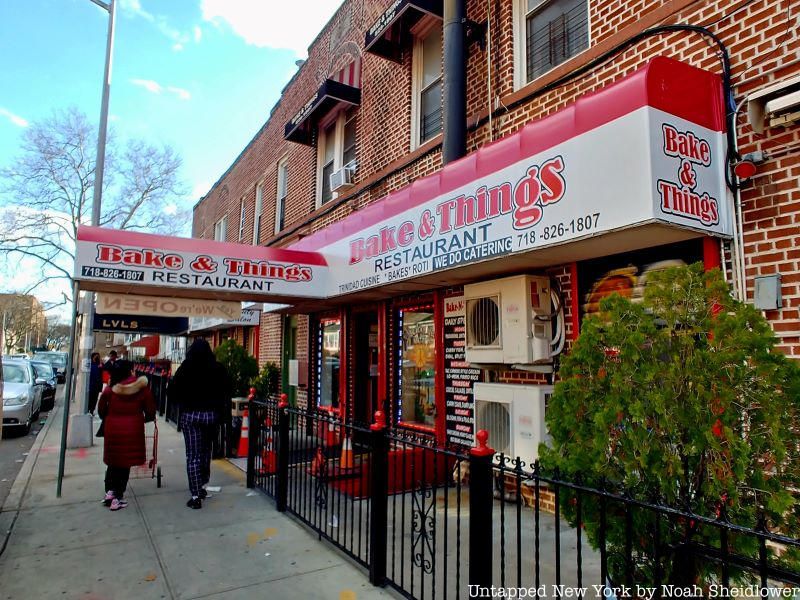
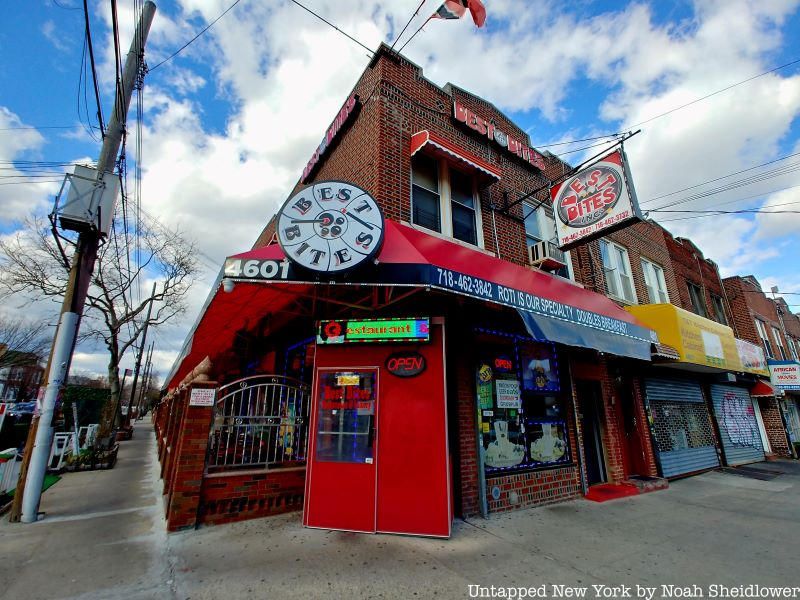
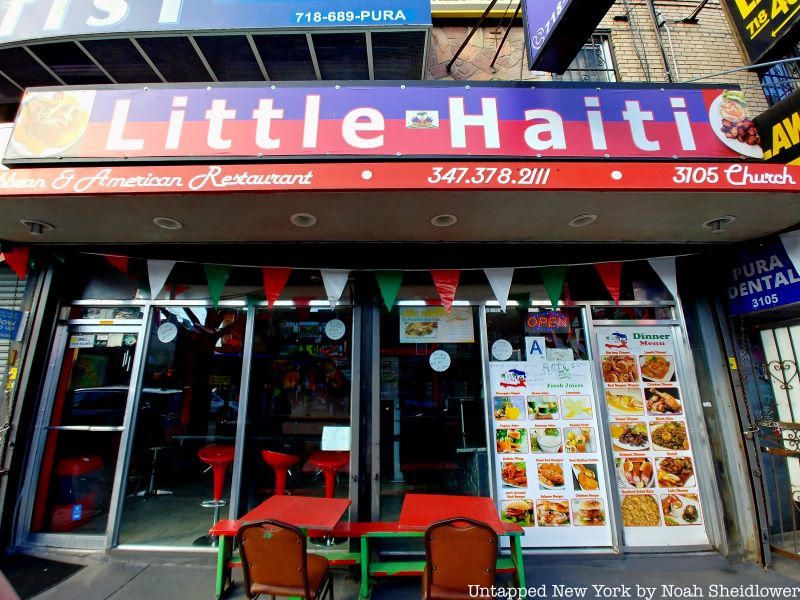
To the east of New York Avenue, another major throughway in the neighborhood are dozens of Caribbean-operated churches (perhaps to be expected on Church Avenue), as well as Kal’s Bakery and Bake & Things. Bob Marley Boulevard becomes more residential continuing east, at one point hosting a Yemeni store and a mosque, before becoming more heavily concentrated with restaurants near Schenectady Avenue. Top eats include Fish Bone, Best Bites, North Coast Shark & Bake, and Pam’s Bakery.
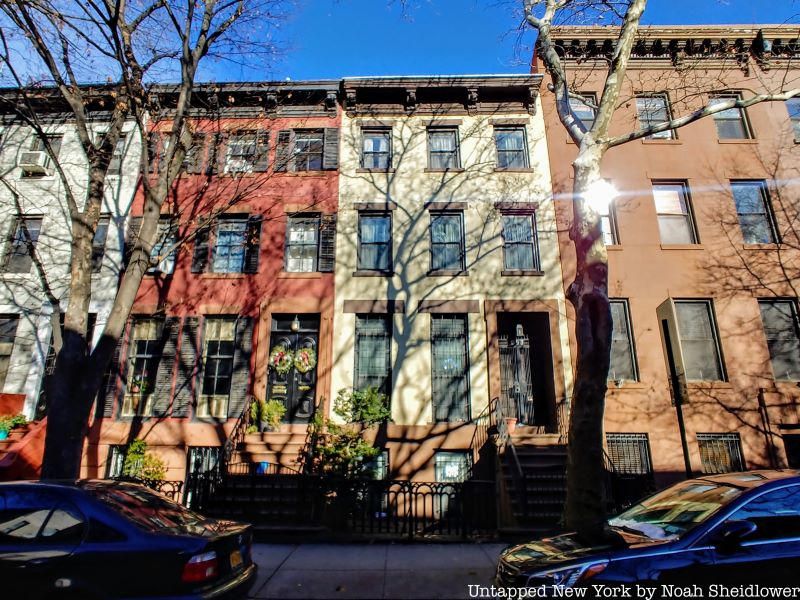
Jean-Michel Basquiat, the legendary graffiti artist, was born in 1960 in Park Slope to Gerard and Matilde Basquiat. His father was born in Haiti while his mother was born to Puerto Rican parents in Brooklyn. In 1966, he moved to East 35th street in East Flatbush, considered an extension of Little Caribbean, where Basquiat began studying and practicing art, attending the nearby Saint Ann’s School, and drawing his favorite cartoons. Basquiat and his friend Marc Prozzo created a children’s book at the age of just seven.
It was at the East Flatbush home that he recovered from an automobile accident in 1968, resulting in a broken arm and a spleen removal. His mother gave him a copy of Gray’s Anatomy, which had a lasting impression on him and was reflected in his later anatomical drawings. After his parents separated, he moved to Boerum Hill with his father and two siblings before moving to Puerto Rico three years later.
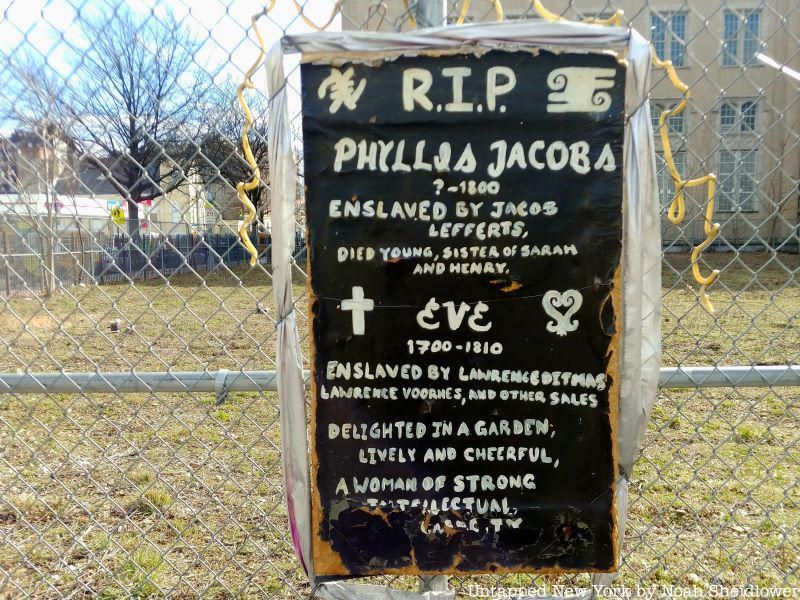
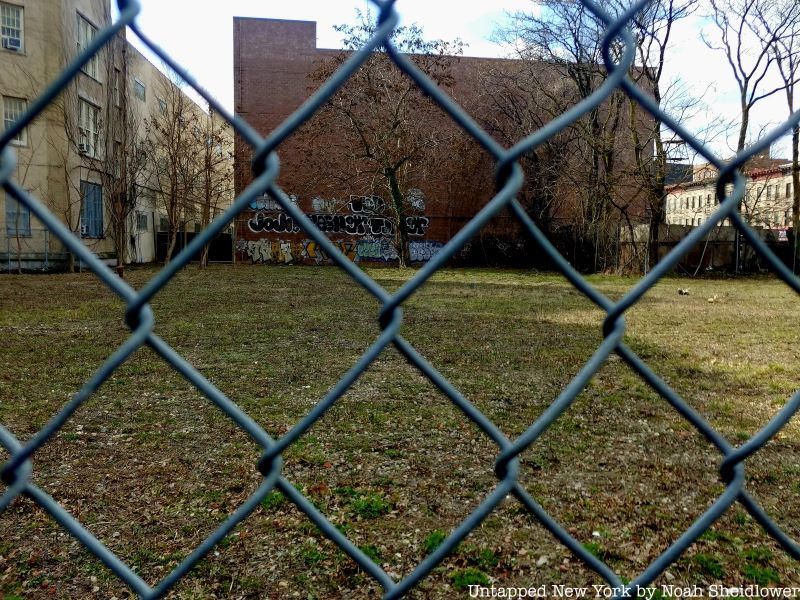
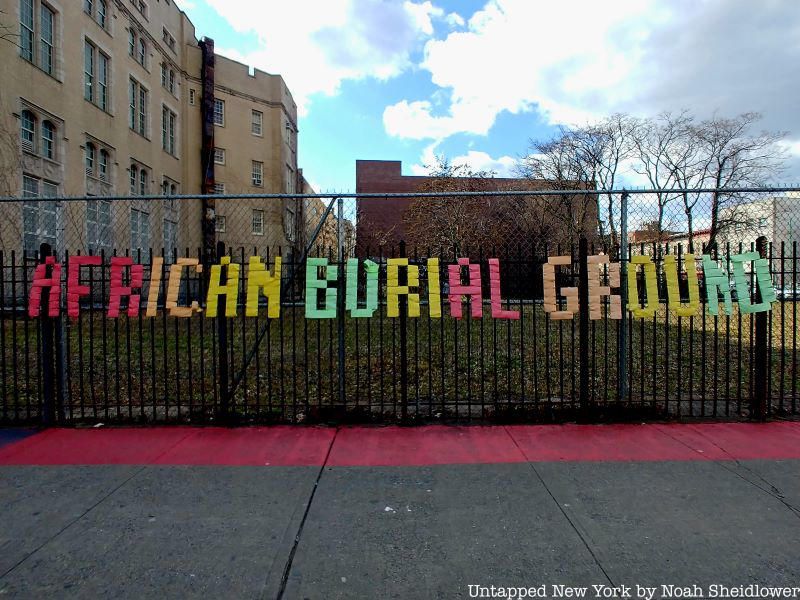
The Flatbush African Burial Ground at 2286 Church Avenue is what remains of a burial ground established likely in the early 1700s by the Dutch Reformed Church. In Dutch Flatbush, about one in three people were enslaved, and their labor was used for to clear land for roads, churches, and farms. This burial ground appeared on an 1855 map by politician Teunis Bergen to the northeast of Erasmus Hall High School. A Coalition of residents, activists, and local organizations, which includes a number of Caribbean figures from the neighborhood, has fought to stop development on the property and reclaim any ancestral remains from the site.
A sign on the outside gate of the burial ground honors Phyllis Jacobs, born around 1785, who was enslaved by Jacob Lefferts and died around 1800. Another woman known as Eve, who was said to have lived to the age of 110, from 1700 to 1810, was enslaved by Lawrence Ditmas, Lawrence Voorhes, and others. She was described as “lively and cheerful, a woman of strong intellectual capacity” who was “delighted in a garden,” according to the sign.
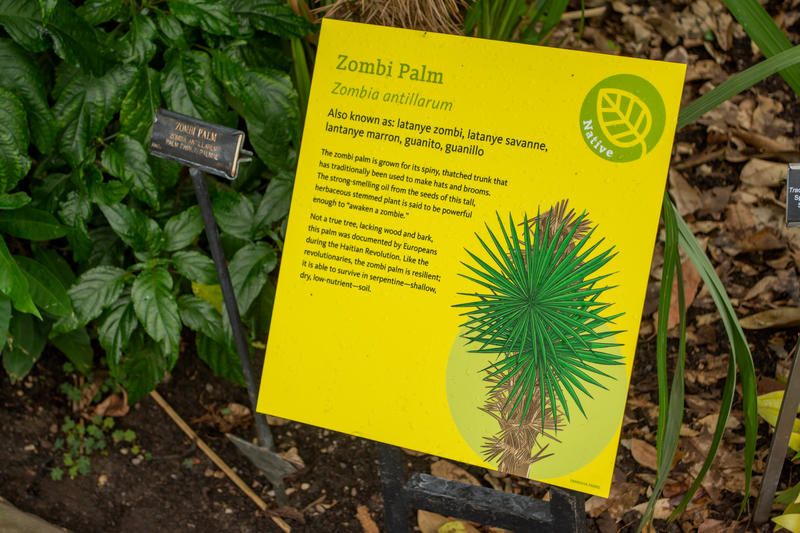
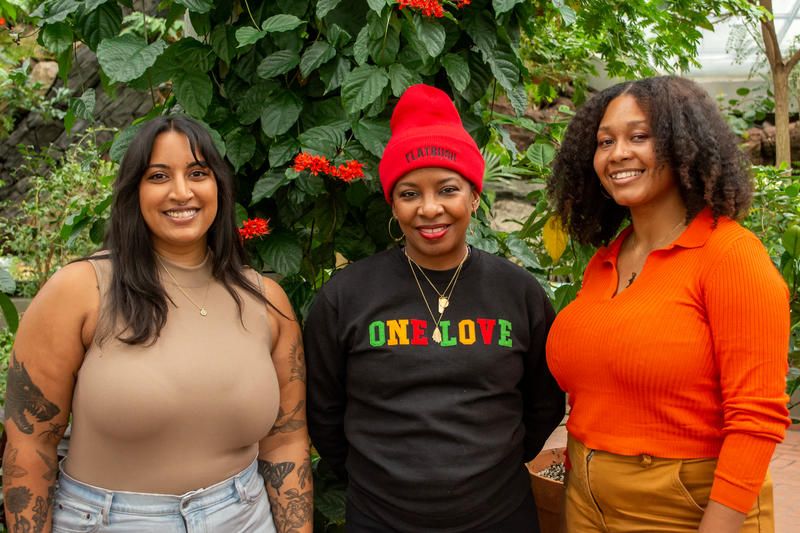
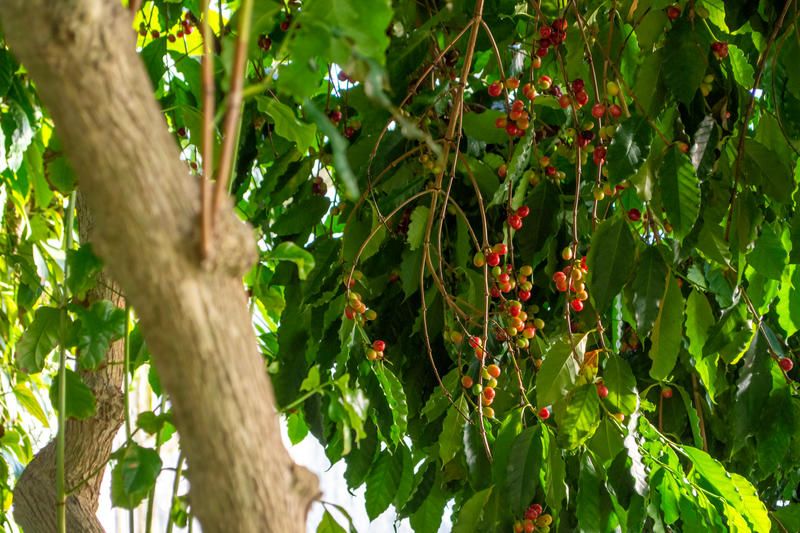
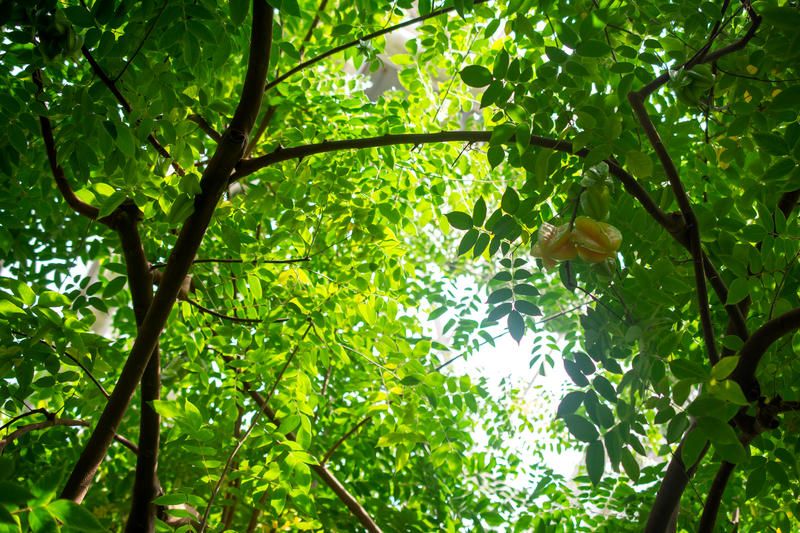
Trees of Little Caribbean, on display at the Brooklyn Botanic Garden, celebrates the trees and treelike plants cherished by Caribbean peoples. Located at Steinhardt Conservatory until December 2023, Trees of Little Caribbean includes a variety of species like papaya, guava, allspice, and soursop, in addition to nonnative plants brought from Europe during the era of colonialism. The display also includes educational material on “stories of rebellion, resilience, spirituality, and joy.”
Trees of Little Caribbean was a collaboration between Chelsea Forgenie, School Workshops Coordinator; Meera Jagroop, Director of Youth Programs; Shelley Worrell, Cofounder of I AM CaribBEING; Mimi Jorling, Gardener, Entry House Collection; and Kate Murphy, Gardener, Tropical Collection. The Gardens’ website features recipes for dishes that center these trees, including cassava dumplings, breadfruit oildown, and tamarind balls. Check out more Little Carbbean spots in the photo gallery below!
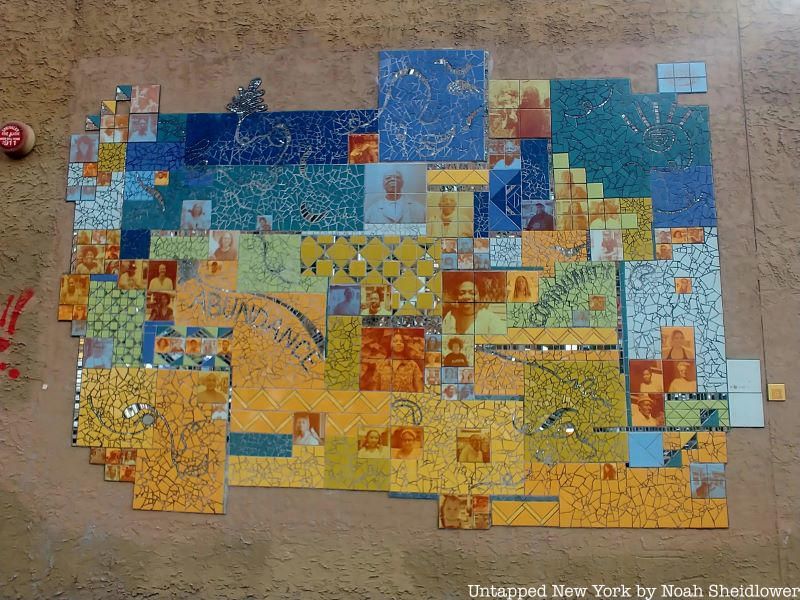
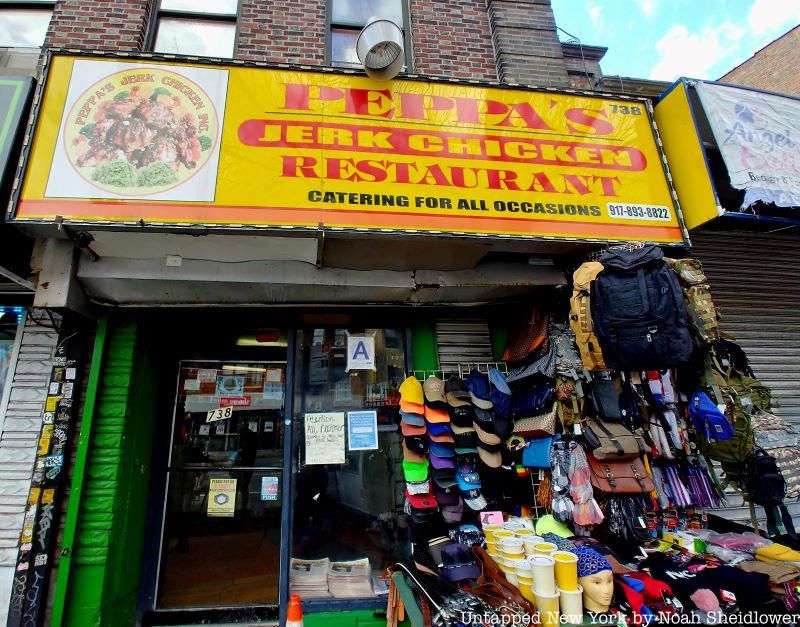
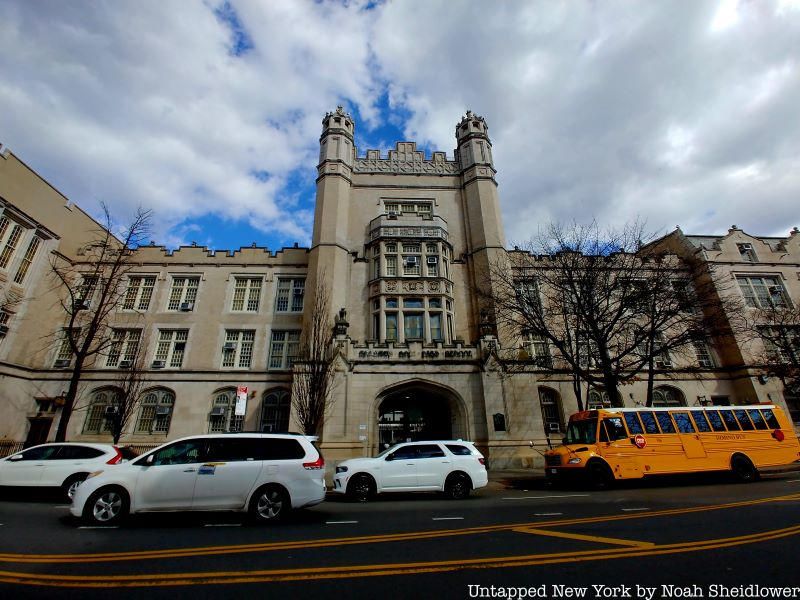
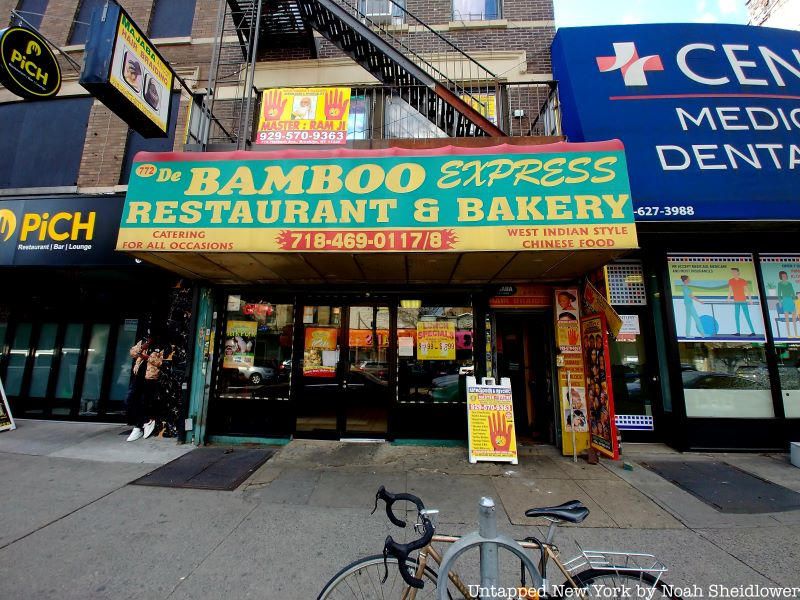
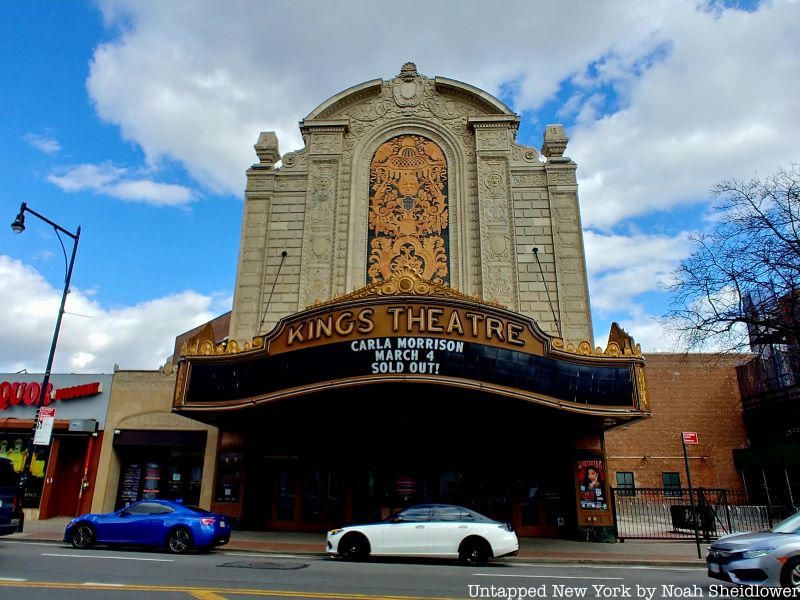
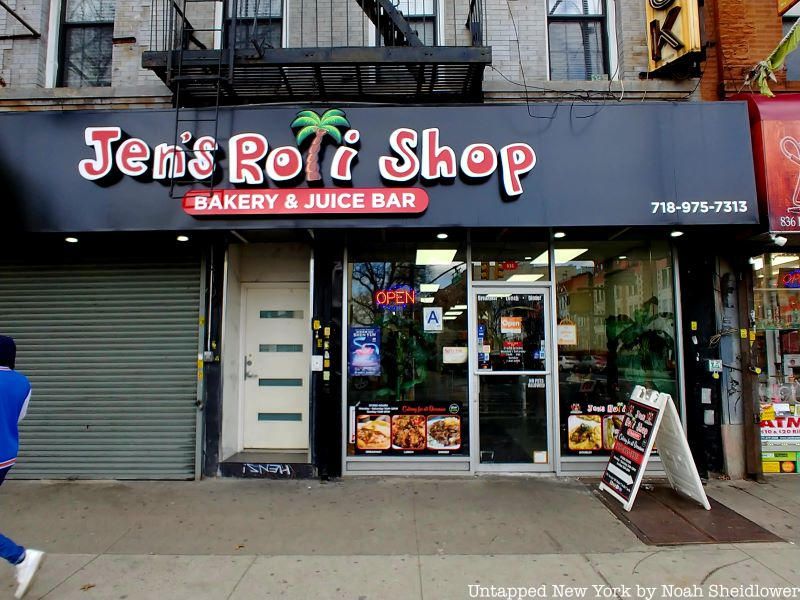
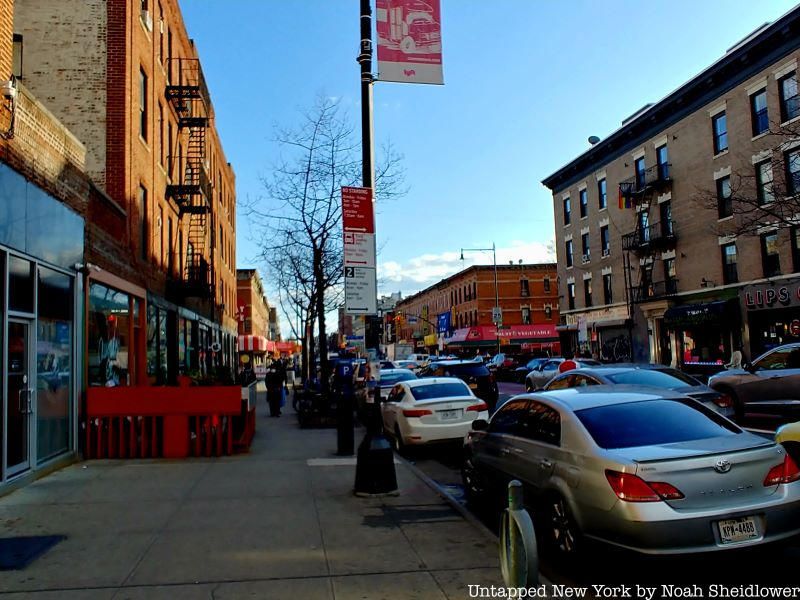
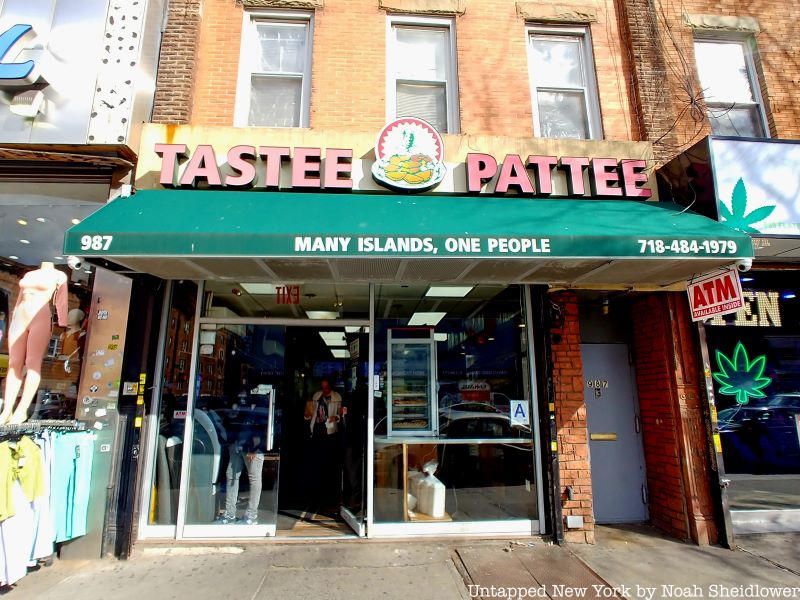
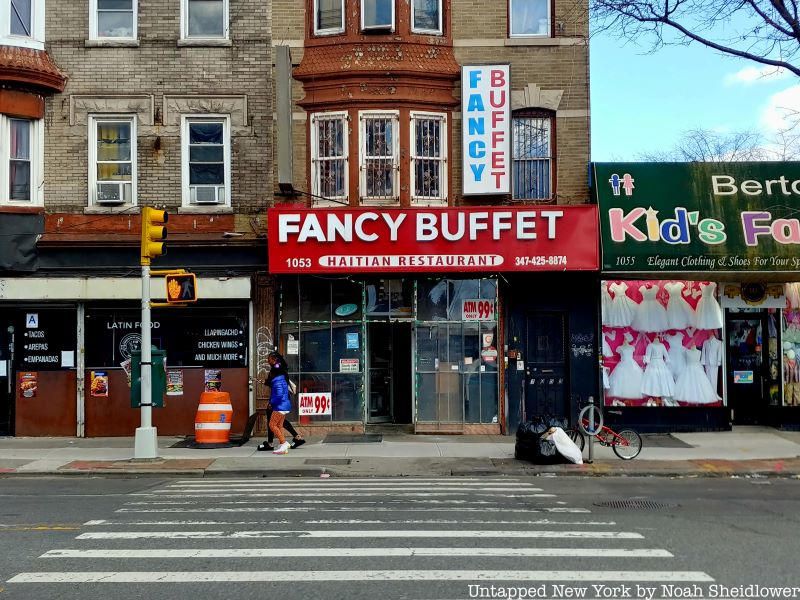
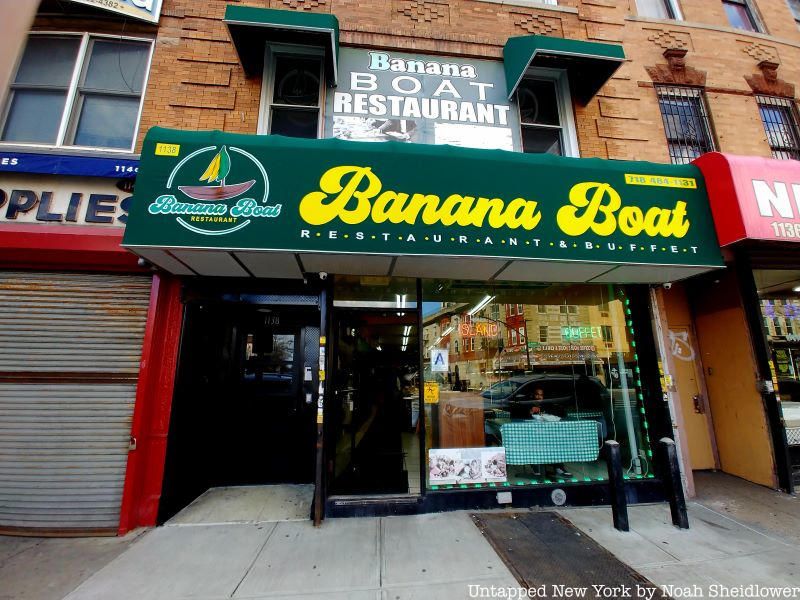
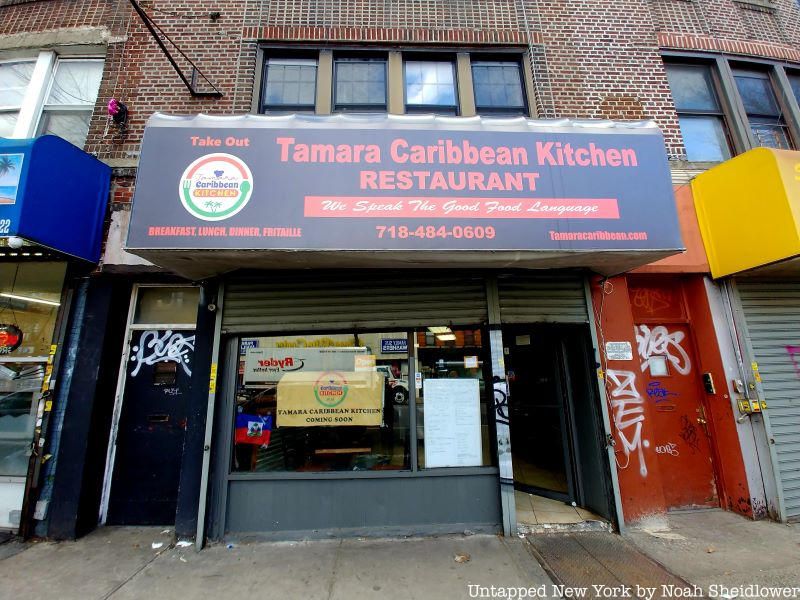
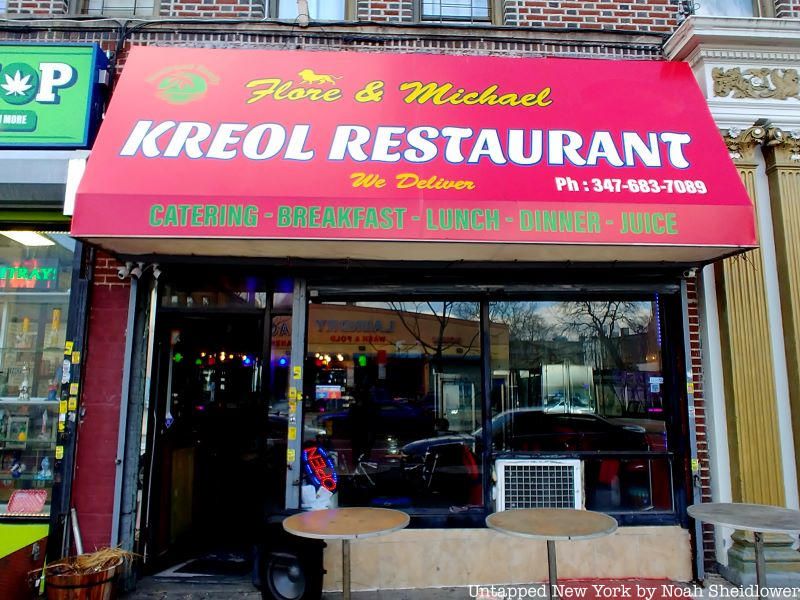
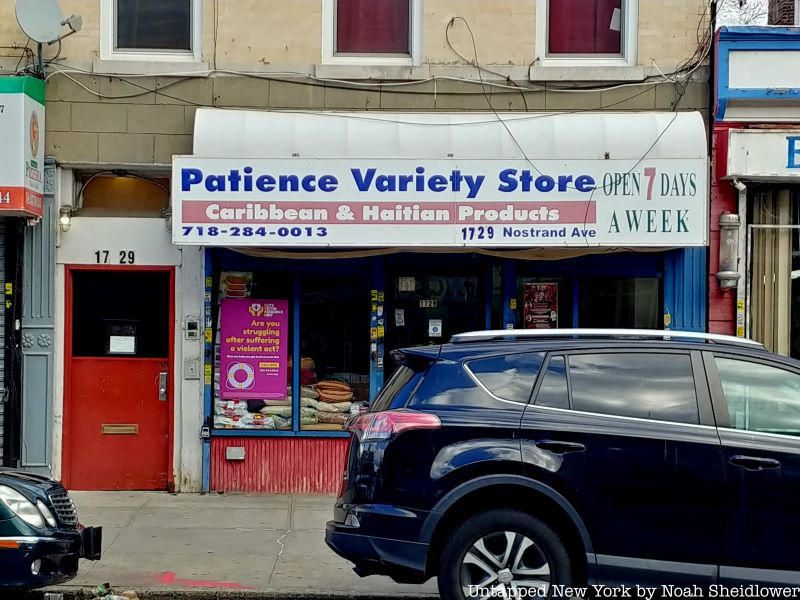
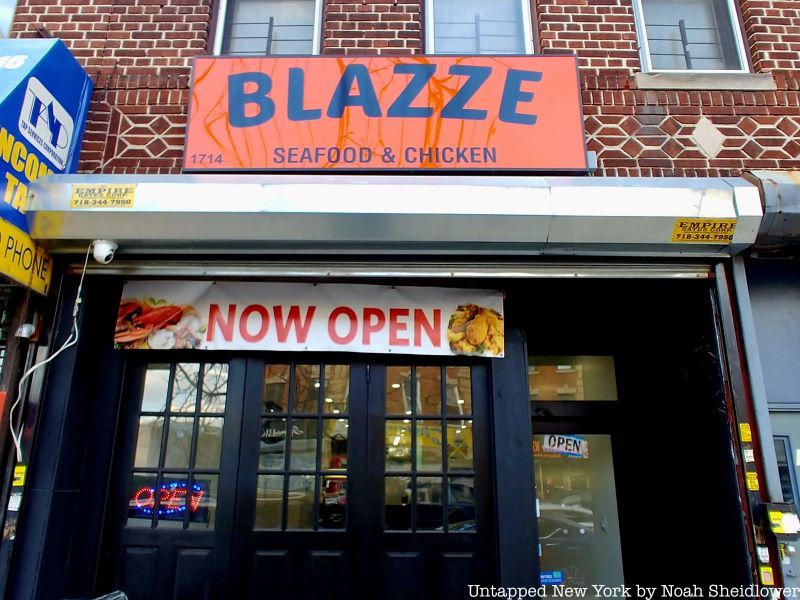
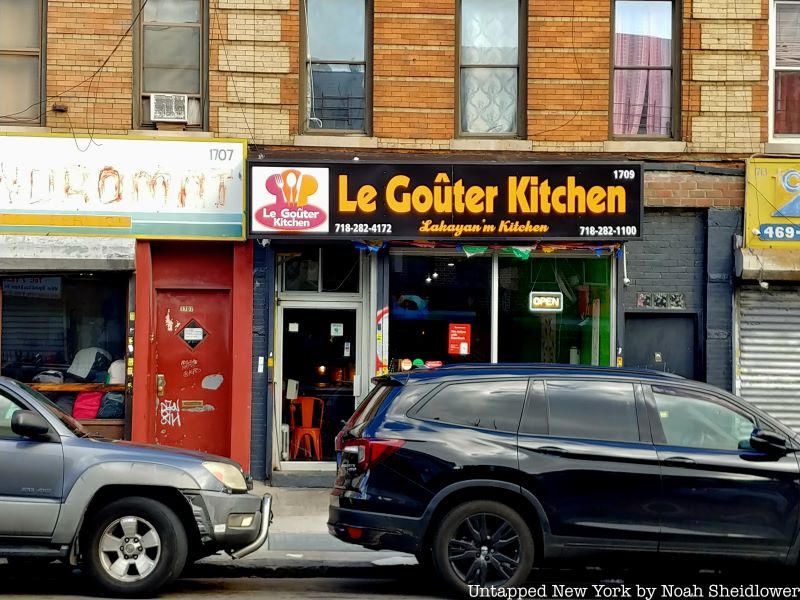
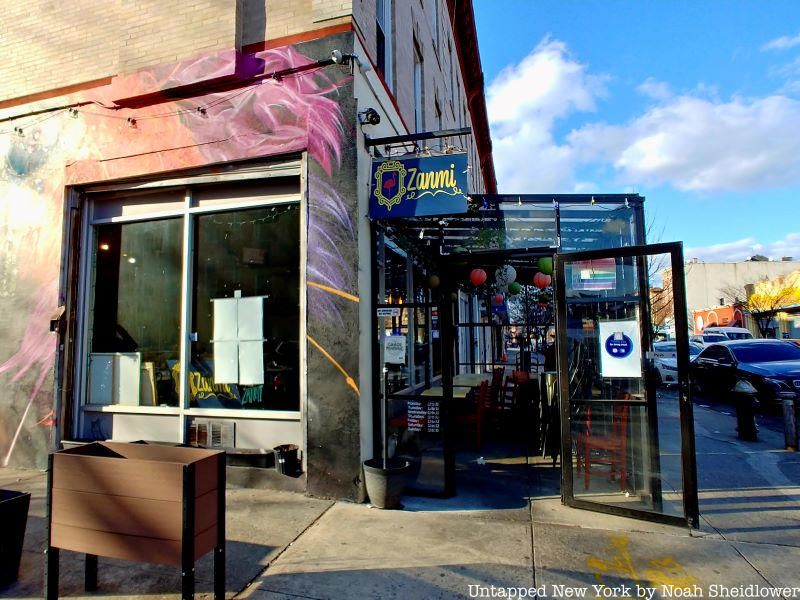
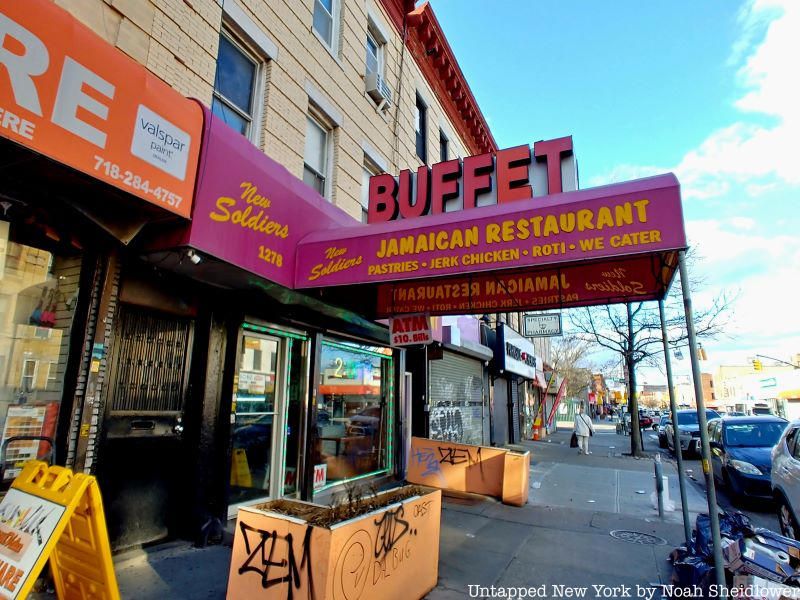
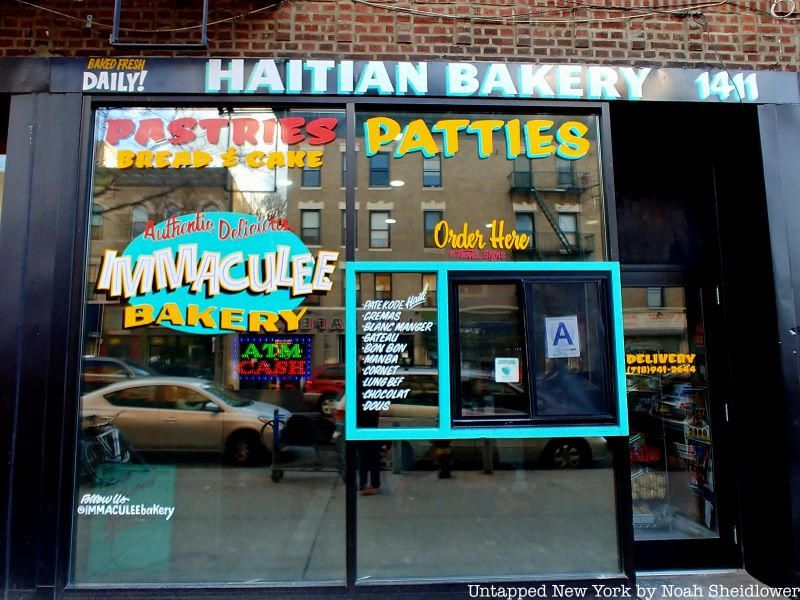
Next, check out 10 Hidden Gems in Crown Heights!
Subscribe to our newsletter